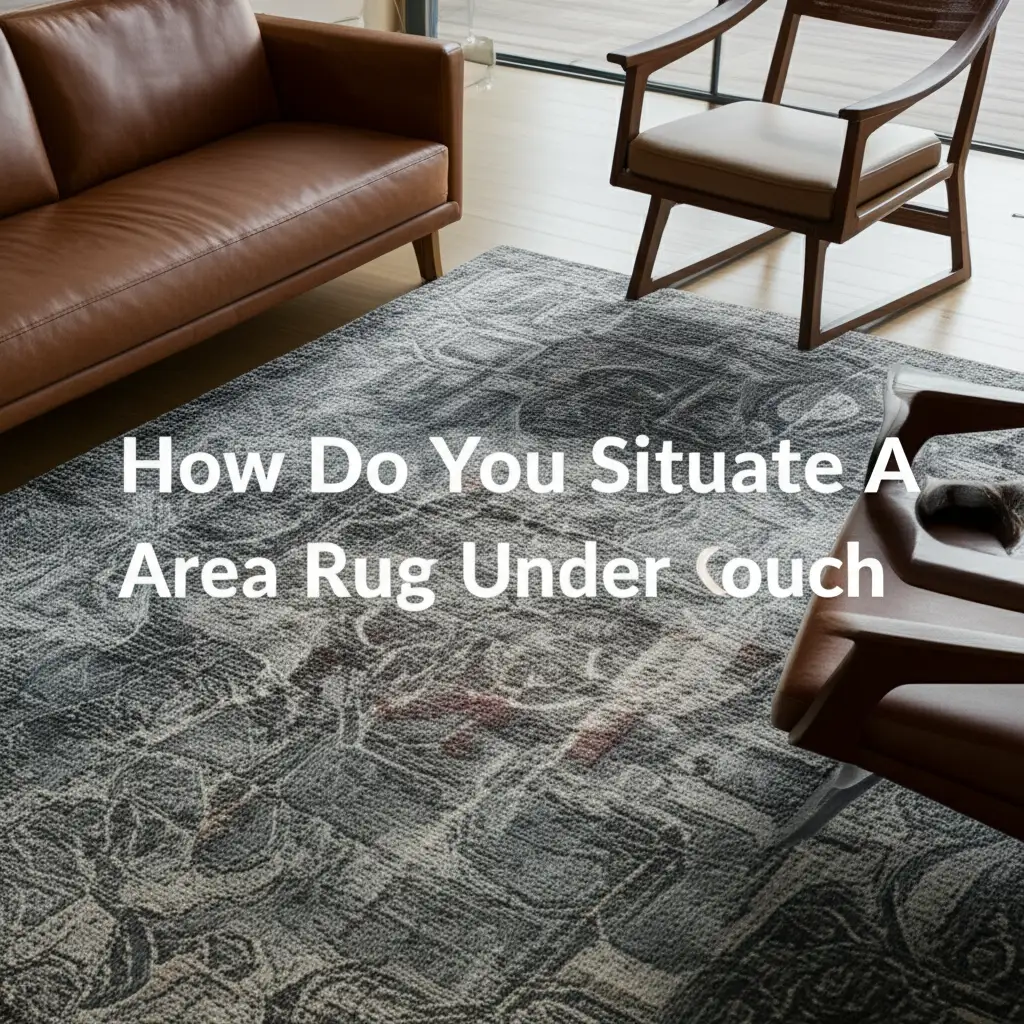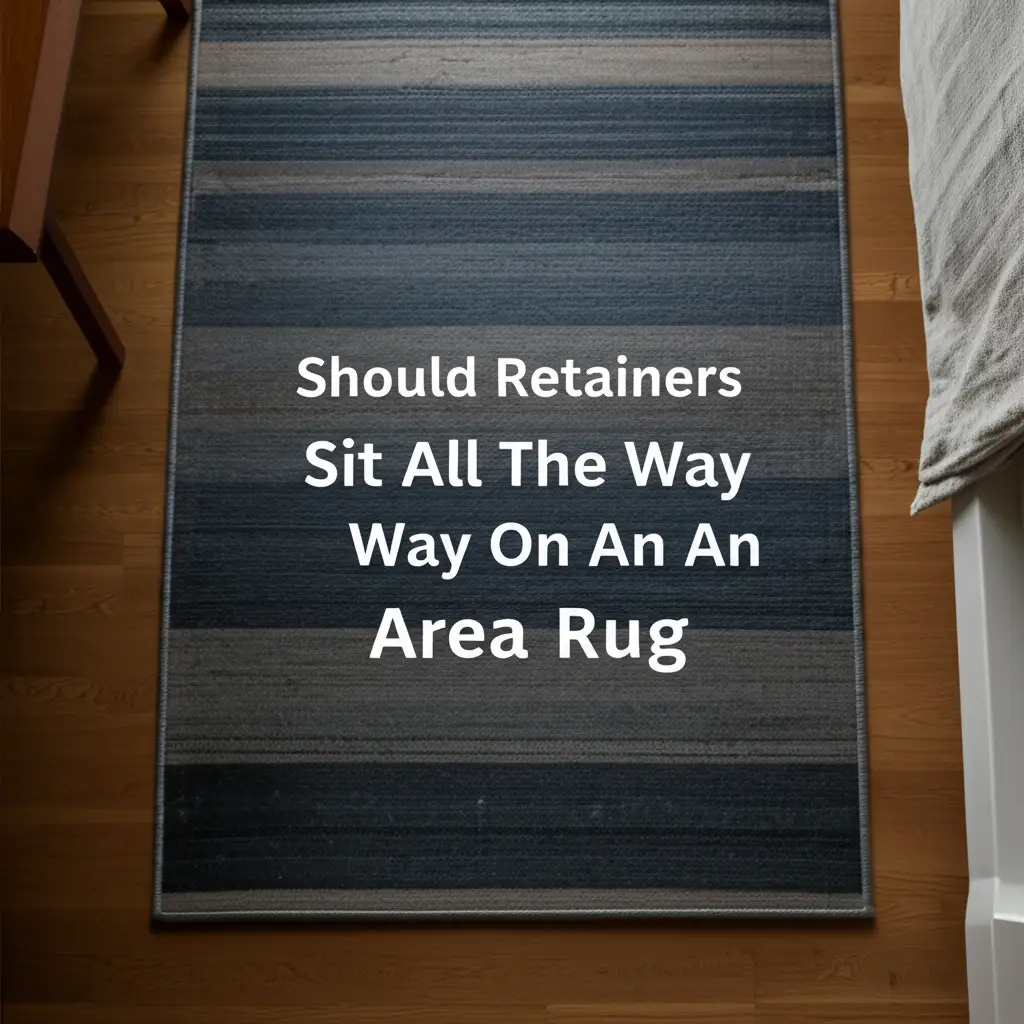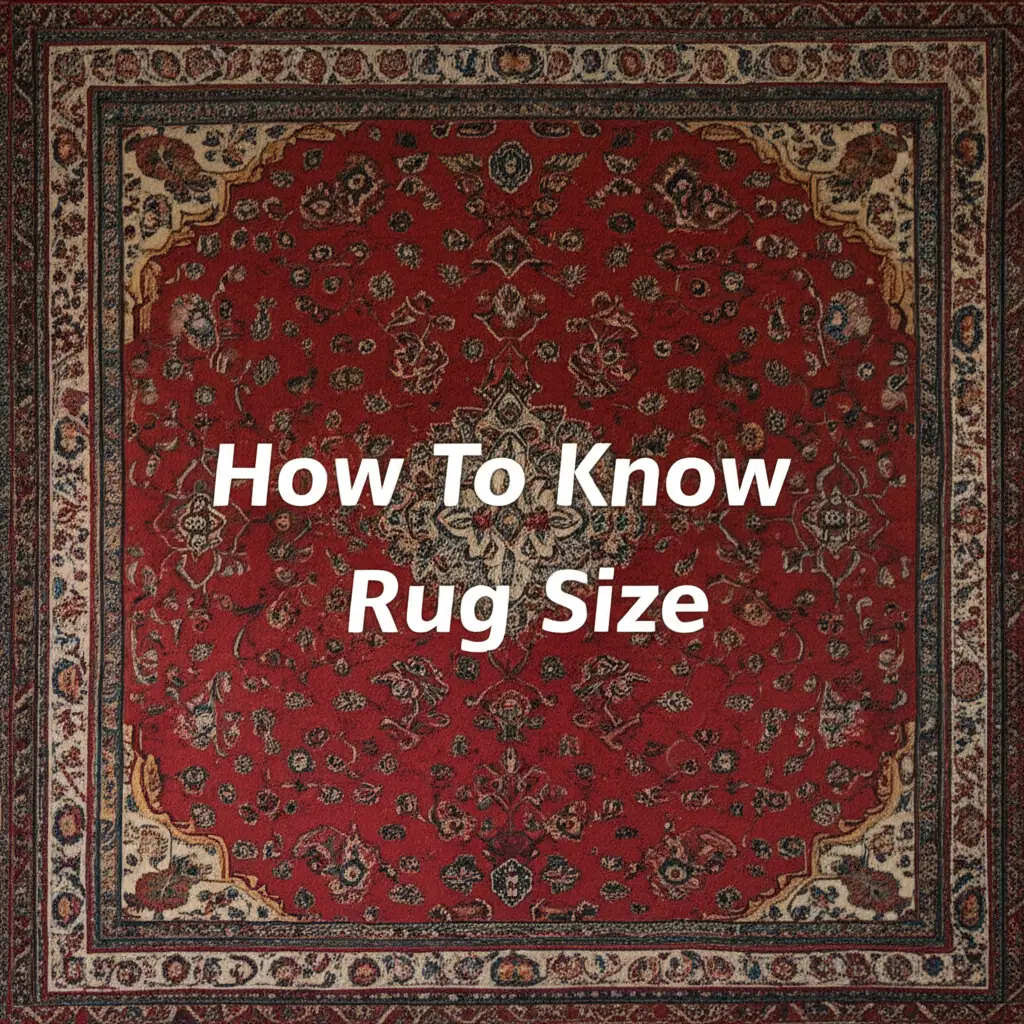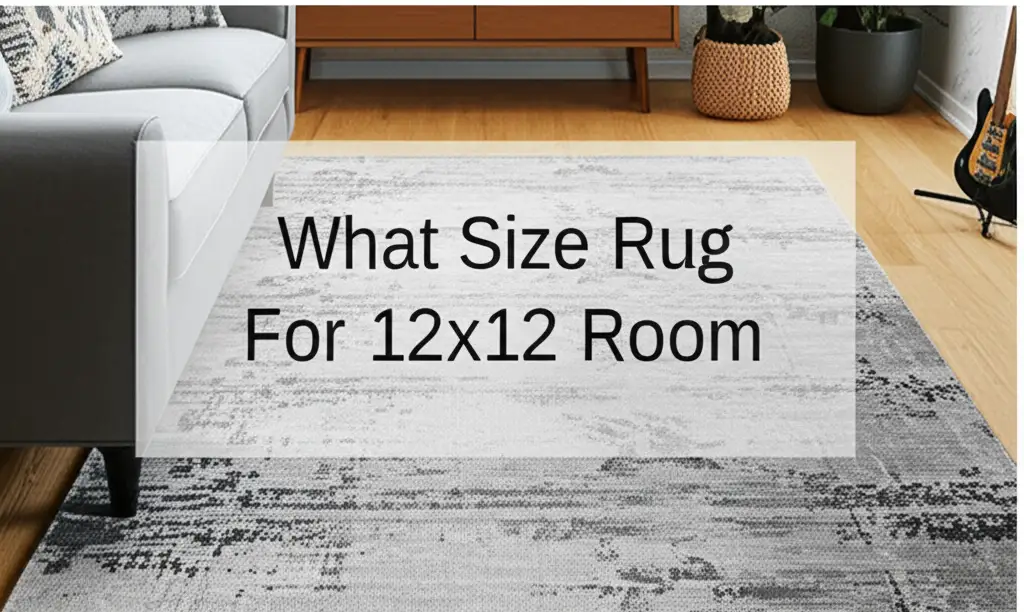· Tessa Winslow · Home Decor · 18 min read
How Do You Situate A Area Rug Under Couch

Situate An Area Rug Under Your Couch For Perfect Style
Have you ever wondered how to make your living room feel complete? A well-placed area rug can transform your space. It defines seating areas and adds warmth. Knowing how to situate a area rug under couch is a key part of interior design. This simple step can make a big difference in how your room looks and feels.
This guide helps you master area rug placement. I will discuss selecting the right size rug for your couch. We will explore different placement rules. I will also cover how your couch style and room layout affect your choice. You will learn about choosing colors and materials. Finally, I will share tips for installation and care. By the end, you will know exactly how to get a cohesive and stylish living area.
Takeaway
- Select a rug size that fits your furniture’s scale.
- Position the rug to anchor your seating area.
- Ensure the rug complements your room’s design.
To properly situate an area rug under your couch, place it so the front legs of the couch rest on the rug. This anchors the furniture. The rug should extend past the ends of the couch by several inches. This creates a balanced and defined seating area.
Understanding the Goal: Why Situate a Rug Under Your Couch?
Placing an area rug under your couch does more than just fill floor space. It serves several important design purposes. I find that a rug acts as the foundation for your living room furniture. It brings all pieces together. It creates a sense of unity and balance in the room.
Defining Your Living Space
A rug helps to define zones in an open-concept layout. For example, it clearly marks where the living area begins. Without a rug, a large room can feel empty. Furniture might appear to float. A rug grounds your couch and chairs. This makes the space feel more structured and intentional. It creates a visual boundary for your seating arrangement.
The rug also creates a cozy atmosphere. It absorbs sound, making your room quieter. It adds a soft layer underfoot. This improves comfort, especially on hard floors. I always recommend considering these benefits. They show how a rug is more than just decor. It is a functional part of your home. It contributes to both the look and feel of your room.
Enhancing Comfort and Style
An area rug immediately adds warmth to a room. It makes stepping onto the floor more pleasant, especially in colder months. Rugs also protect your flooring from wear and tear. This is useful in high-traffic areas around your couch. Beyond function, a rug is a powerful style tool. It introduces color, pattern, and texture.
You can use a rug to tie together different design elements. It can be a focal point that adds visual interest. Or, it can be a neutral base that lets your furniture stand out. I like to think of a rug as a piece of art for your floor. It completes the room’s aesthetic. A well-chosen rug can elevate your entire decor scheme. It adds depth and personality.
Choosing the Right Rug Size for Your Couch Arrangement
Selecting the correct rug size is the most important step. A rug that is too small can make your room look disproportioned. A rug that is too large can overwhelm the space. The goal is to find a rug that complements your couch and the room size. I always start by measuring my living area. Then, I measure my couch and any other seating pieces. This gives me a clear idea of the space I need to cover.
The “All Legs On” Rule
This rule means all legs of your couch and other main seating furniture rest on the rug. This creates a very grand and unified look. It works best in larger living rooms. The rug should extend at least 6-12 inches beyond the sides of your couch. This ensures good coverage. It prevents the couch from feeling like it is just sitting on the rug’s edge.
This approach gives a luxurious feel. It makes the entire seating area feel like one cohesive unit. It is ideal for spaces where the rug defines the primary living zone. When you walk on the rug, you should feel fully inside the seating area. This rule also means you need a larger rug, so plan your budget accordingly. For more guidance on fitting rugs into your furniture layout, consider reading about what proportions for an area rug in a furniture grouping.
The “Front Legs On” Rule
This is a popular and versatile rule for many homes. The front two legs of your couch sit on the rug. The back legs remain on the bare floor. The rug should extend under the couch by at least 6-8 inches. It should also extend past the ends of the couch. An extension of 6-12 inches on each side is ideal. This creates a strong visual connection.
This method works well for medium to large living rooms. It uses less rug material than the “all legs on” rule. Yet, it still defines the space effectively. It connects the furniture without the need for an oversized rug. I often use this rule myself. It is a great balance of style and practicality. It ensures your couch is anchored. It also leaves enough floor space around the rug.
Small Spaces and Rug Placement
For smaller rooms, you might have less flexibility. The “front legs on” rule still applies. However, the rug might not extend as far past the couch ends. Ensure the rug is wide enough to cover the walking path in front of the couch. This prevents the rug from looking like a small island. Sometimes, only the coffee table or the very front of the couch sits on the rug.
This can still work, but it offers less definition. In very small rooms, a rug under the couch might not be the best solution. Instead, consider a runner in front of the couch. Or, a smaller rug under just the coffee table. The key is to avoid making the room feel more cramped. A helpful resource for sizing rugs in specific room dimensions is what size area rug for 10x11 form room. Always measure your specific space before buying.
Strategic Placement: Where Exactly Does the Rug Go?
Once you pick the right size, positioning the rug is the next step. The exact placement depends on your room’s layout and your desired look. The goal is always to create a cohesive and inviting seating area. I consider the main walking paths in the room. I also think about how the rug interacts with other furniture pieces.
Centering the Rug
The most common method is to center the rug with your main couch. This creates a balanced look. The middle of the rug should align with the middle of your couch. This ensures an even appearance. If you have a coffee table, it should also be centered on the rug. This draws the eye to the main seating zone.
Centering works well in most living rooms. It provides a natural focal point. It helps to define the entire conversation area. I always advise people to take a step back after placing the rug. Look at it from different angles. Make sure it looks symmetrical and intentional. Slight adjustments can make a big difference in the overall feel.
Aligning with Furniture
Sometimes, you do not center the rug with the couch alone. You might align it with the entire furniture grouping. For example, if you have a sofa and two accent chairs. The rug should extend under the front legs of all these pieces. This means the rug might be wider than just the couch. It frames the entire conversation area.
This alignment creates a strong sense of unity. It connects all the pieces of furniture together. It makes the living space feel complete. Consider how each piece relates to the rug. The rug should act as a “stage” for your furniture. It brings harmony to the entire arrangement. This is especially useful in open-concept rooms. It clearly outlines the living zone.
Considering Your Couch Style and Room Layout
The type of couch you have impacts how you should place your area rug. A sectional sofa has different needs than a standard sofa. The overall layout of your room also plays a big role. I always recommend looking at your specific furniture and room shape. This helps you make the best decision for your space.
Sectional Sofa Considerations
Sectional sofas are large and often L-shaped. They require a larger area rug. The rug should extend under all parts of the sectional. This applies to either the “all legs on” or “front legs on” rule. For an L-shaped sectional, ensure the rug follows the “L” shape. It should cover the entire area within the sectional’s footprint. This creates a unified look for the large seating piece.
A common mistake is using a rug that is too small for a sectional. This makes the sectional look too big for the rug. It breaks the visual connection. The rug should define the entire sectional seating area. It should extend beyond the open side of the sectional. This allows other accent chairs to sit partly on the rug. Always measure your sectional carefully before buying a rug.
Sofa and Loveseat Combinations
When you have a sofa and a loveseat, you have more flexibility. You can use one large rug that covers both pieces. Both the sofa and loveseat would have their front legs on the rug. The rug should extend beyond both ends of the sofa and the loveseat. This creates one large, connected seating area. This is ideal for formal living rooms.
Alternatively, you could use two smaller rugs. Place one rug under the sofa and another under the loveseat. This works for more informal or segmented spaces. I find that one large rug usually creates a more cohesive look. It makes the room feel more expansive. However, two smaller rugs can define distinct zones within a larger room. Consider the overall flow of conversation.
Open-Concept Living Areas
In open-concept homes, rugs are essential for defining spaces. Your area rug under the couch helps to separate the living room from the dining area or kitchen. It acts as a visual wall. The rug should clearly mark the boundaries of your seating zone. Ensure the rug does not overlap with other functional areas. This maintains clear pathways.
The rug size should be generous in open-concept spaces. This provides a strong anchor for the living room. It prevents the furniture from feeling lost in a large space. I suggest using the “all legs on” rule for the main sofa. Then, ensure accent chairs also have their front legs on the rug. This creates a distinct and inviting living zone within a larger open area.
Achieving Cohesion: Color, Texture, and Material Choices
Beyond placement, the look and feel of your rug are important. The rug’s color, texture, and material contribute to the overall room’s aesthetic. They also impact the rug’s durability and maintenance. I consider my couch color first. Then, I think about the existing decor in the room. The rug should complement, not compete with, these elements.
Complementing Your Couch Color
The rug color should work with your couch. If your couch is a neutral color, you can choose a bold rug. This adds a pop of color or a striking pattern. If your couch has a strong color or pattern, a neutral rug is often best. This provides a calm base. It lets the couch be the star. For example, if you have a brown couch, you might wonder what color area rug for brown couch would work best. Lighter rugs can make a dark couch feel less heavy. Darker rugs can add depth to a light-colored couch.
I often pick a rug that has at least two or three colors already present in the room. This creates a sense of harmony. The rug does not have to match exactly. It should blend well with your existing palette. A good rule is to pick a color from your rug to use in other accents, like pillows or throws. This ties the whole room together.
Adding Texture for Depth
Texture adds visual interest to a room. A rug with a deep pile, like shag, feels soft and luxurious. It can add warmth to a minimalist space. A flat-weave rug offers a crisp, clean look. It works well in modern or high-traffic areas. You can also mix textures. Pair a smooth leather couch with a textured wool rug. This creates contrast.
I love using texture to make a room feel more inviting. A soft rug makes you want to sink your feet into it. A natural fiber rug, like jute, adds an organic touch. Think about how the rug texture complements your couch’s fabric. A plush velvet couch with a silky rug can feel overly soft. A more varied texture might be better. Balance is key.
Practical Material Choices
The rug material affects its look, feel, and durability. Wool rugs are soft, durable, and naturally stain-resistant. They are a good choice for living rooms. Synthetic rugs, like polypropylene, are often more affordable. They are also very easy to clean and resist fading. Cotton rugs are soft and washable. They work well in casual spaces.
Consider your lifestyle when choosing a material. Do you have pets or children? A durable, easy-to-clean material is best. What kind of area rug is good for dogs? Synthetic or low-pile wool rugs might be good. Natural fibers like jute or sisal are very durable. However, they can be rougher underfoot. Silk rugs are beautiful but delicate. They need more careful handling. Choose a material that fits your family’s needs and activity level.
Essential Tools and Tips for Easy Rug Installation
Placing a large area rug under a couch can be tricky. It often requires some planning and maybe an extra set of hands. Having the right tools also makes the process much smoother. I always make sure the floor is clean before I start. This helps the rug lay flat and reduces dust under it.
Using a Rug Pad
A rug pad is a must-have item. It provides several benefits. First, it prevents the rug from slipping. This is important for safety, especially on hard floors. Second, it adds an extra layer of cushioning. This makes the rug feel softer underfoot. Third, a rug pad protects your flooring. It prevents dye transfer and scratches.
Choose a rug pad that is slightly smaller than your rug. It should be about 1 inch shorter on all sides. This ensures the pad is not visible under the rug. Different types of pads are available. Non-slip pads are thin and sticky. Cushioned pads are thicker and add comfort. I always recommend using a good quality rug pad. It extends the life of your rug and your floor. For carpeted floors, a non-slip pad is still useful. It prevents the rug from wrinkling. You can learn more about securing rugs to various surfaces with a pad by checking out how to tape an area rug to carpet pad.
Getting Help with Large Rugs
Large rugs can be heavy and awkward to move alone. I always suggest asking for help. Two people can position a rug much more easily than one. Roll the rug tightly before moving it. This makes it easier to unroll into the correct position. Unroll it from one end towards the other, slowly guiding it under the couch.
If you are moving heavy furniture, use furniture sliders. These go under the legs of your couch. They allow you to slide the furniture without damaging your floor or the rug. Once the rug is mostly in place, you can make small adjustments. Push and pull the rug carefully until it is perfectly aligned. It might take a few tries to get it just right.
Dealing with Rug Wrinkles
New rugs often arrive with wrinkles or creases from shipping. These usually flatten out over time. You can speed up the process. Lay the rug flat in the room for a few days. The weight of the couch will also help. If wrinkles persist, try these methods:
- Reverse Roll: Roll the rug tightly in the opposite direction of the crease. Leave it rolled for a few hours.
- Heat: Use a hairdryer on a low setting or a steam iron (with a cloth barrier) over the wrinkles. Be careful not to damage the rug fibers.
- Weight: Place heavy books or furniture on the stubborn creases for a few days.
A good rug pad also helps prevent new wrinkles from forming. It keeps the rug stable on the floor. I find that patience is key when dealing with new rug wrinkles. Most of them disappear with a little time and use.
Maintaining Your Rug’s Look and Longevity
Proper care keeps your area rug looking new and extends its life. A rug under a couch can collect dirt and crumbs easily. Regular cleaning is important. Different rug materials need different cleaning methods. I always check the manufacturer’s care instructions first. This prevents accidental damage.
Regular Cleaning Practices
Vacuum your area rug regularly. This removes dirt, dust, and pet hair. High-traffic areas, like those near the couch, might need more frequent vacuuming. Use a vacuum cleaner with adjustable height. This protects the rug fibers. For shaggy rugs, use a suction-only setting or a high pile setting. A beater bar can damage delicate fibers.
Rotate your rug every 6-12 months. This ensures even wear and tear. It prevents one area from looking more faded or worn. If parts of your rug are under the couch, rotating it exposes those parts to light. It also helps to even out foot traffic. I also recommend professional cleaning every 1-2 years. This deep cleans the rug and removes embedded dirt. Learning how do you clean an area wool rug or how to keep a cream area rug clean can be very helpful for everyday maintenance.
Addressing Spills and Stains
Act quickly when spills happen. The faster you respond, the easier the stain is to remove. Blot the spill with a clean white cloth. Do not rub, as this can spread the stain. Use a dabbing motion from the outside of the stain inwards. This prevents the stain from spreading.
For specific stains, use appropriate cleaning solutions. Always test the solution on a small, hidden area of the rug first. This ensures it does not damage the color or fibers. Many rugs can be cleaned with a mixture of mild detergent and water. For tough stains, commercial rug cleaners are available. Some people use a shampooer on their rugs. If you are wondering, can you use a shampooer on an area rug, the answer is often yes, but with caution. Avoid overwetting the rug. Ensure it dries completely to prevent mold or mildew.
FAQ Section
Should the rug be under all legs of the couch?
Placing the rug under all legs of the couch creates a unified and luxurious look. This method works best in large rooms. It makes the entire seating area feel grounded. It also provides comfort underfoot no matter where you step near the couch. This style helps to define a grand living zone.
Can a rug be too big for a living room?
Yes, a rug can be too big. A rug that touches the walls or leaves very little space around it can make a room feel cramped. It loses its ability to define a specific area. Ensure you have at least 18 inches of bare floor between the rug and the walls in most rooms. This provides balance.
What if my couch is against a wall?
If your couch is against a wall, place the rug with its front legs on rule. The rug should extend under the front of the couch by at least 6-8 inches. It should also extend past the ends of the couch. This still defines the seating area and anchors the furniture effectively.
How far should a rug extend past the couch?
For balance, a rug should extend 6 to 12 inches past the ends of your couch. This ensures the rug is wider than the furniture. It creates a complete and intentional look. If the rug is too narrow, it can make the couch feel disconnected from the rug.
Do you need a rug pad under a couch?
Yes, a rug pad is always recommended. It prevents the rug from slipping, which adds safety. It also provides extra cushioning and comfort underfoot. Furthermore, a rug pad protects your flooring from potential damage or discoloration from the rug.
Can I put a small rug in front of my couch?
You can put a small rug in front of your couch, but it may not anchor the space well. A small rug works best under a coffee table, not under the couch. It can define a small area. However, it often makes the room feel less cohesive than a larger rug.
Conclusion
Placing an area rug under your couch is a simple yet powerful design choice. It defines your living space. It adds warmth, comfort, and style. By understanding size rules and placement options, you can transform your room. I hope this guide helps you feel confident in your rug decisions.
Remember to measure your space carefully. Choose a rug that complements your couch and room size. Think about color, texture, and material to match your home’s style. Do not forget a good rug pad for safety and longevity. With these steps, you can perfectly situate a area rug under couch. You will create a beautiful and inviting living area. Your space will feel more complete and stylish. Now, go ahead and give your living room the update it deserves!





